In 2020, nearly half of the world's population was at risk of malaria.
The disease is preventable and curable. However, in areas with limited vector control, the risk remains significant.
Ahead of World Malaria Day, we sat down with Jitendra Sharma from the United Nations Environment Programme’s (UNEP) Chemicals and Waste Unit to discuss how UNEP is helping countries tackle the disease.
Malaria is typically understood as a public health issue. How does it fall under your remit?
UNEP’s mandate stems from the Stockholm Convention – a chemicals agreement that aims to protect human health and the environment from Persistent Organic Pollutants (POPs). DDT – a chemical used for malaria control – falls under this convention. So, while malaria is of course a public health issue, it’s also an environmental one. Environmental and human health are closely linked.
How is DDT used to combat malaria?
DDT was first used to tackle malaria during the Second World War, then later as an agricultural and household pesticide. Typically, it takes the form of a spray and for many years, it was considered a solution. However, in the 1960s, it was identified as toxic and was subsequently banned in many countries.
Today, DDT is still allowed for production and restricted use for disease vector control in accordance with World Health Organization (WHO) recommendations and guidelines; however, only eighteen countries are listed on the Stockholm Convention’s DDT register and not all use the chemical.
Integrated Vector Management (IVM) is now the most widely adopted approach to tackle malaria, as a more efficacious, cost-effective and environmentally sustainable method.
Why is DDT dangerous?
DDT was one of the initial “dirty dozen” POPs listed under Stockholm Convention. It can cause a range of chronic and sub-chronic health effects including widespread human cancers, characteristics of hormone disruption as well as detrimental effects on wildlife, including thinning the eggs of the iconic Bald Eagle in the United States.
When released, the chemical accumulates in the environment, polluting the air, water and soil. It does not break down and can travel far from its point of use. All over the world, it has even been detected in food systems. For this reason, the Stockholm Convention encourages countries to phase out DDT in favor of non-toxic alternatives.
Can you describe UNEP’s work on DDT and how it is helping fight malaria?
With support from the Global Environment Facility, UNEP aims to end DDT use worldwide through monitoring, raising awareness on the risks of exposure, helping countries eliminate unused stocks and supporting alternatives that can help people avoid malaria without exposing them to toxic chemicals.
At the request of Stockholm Convention, UNEP prepared a Road Map for the Development of Alternatives to DDT in partnership with WHO, which guides efforts at all scales to transition away from DDT towards safe, effective, affordable, and environmentally sound alternatives. The Road Map was adopted by Member States in 2015 at the 7th Conference of the Parties of the Stockholm Convention.
In addition, in India for example, UNEP partnered with the United Nations Industrial Development Organization to replace the use of DDT with sustainable, non-POPs alternatives, while training national stakeholders on IVM. The result, together with country-led initiatives, has seen India’s DDT and malaria cases decrease significantly over the past 10 years.
The Unit has been working on phasing out of DDT for malaria control for over 10 years. What have we learned during this time?
We have learnt a lot. In many places, tackling malaria is a national priority. Missions and programmes exist and it has been encouraging to see several countries transition from using DDT to less toxic alternatives, as well as IVM. However, fear of an outbreak still exists, which is why some of the 18 countries on the Stockholm Convention’s DDT register remain on the list, even if they do not use it. Navigating this has been a challenge, to convince countries of the effectiveness of alternative approaches and to encourage them to eliminate DDT. The Stockholm Convention and UNEP’s work has been important in this effort but there is still more to do.




